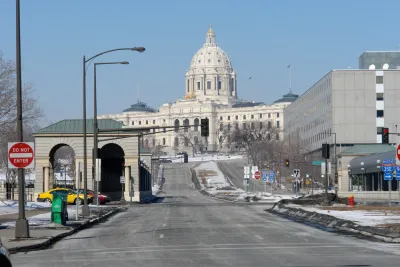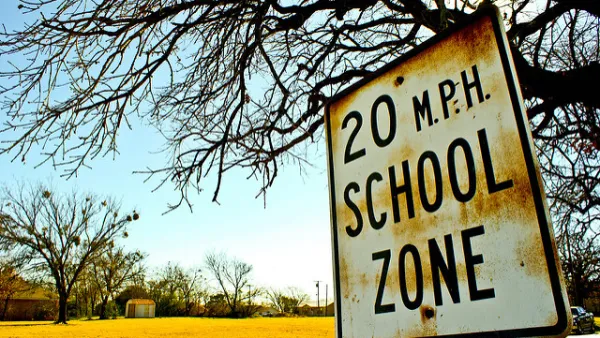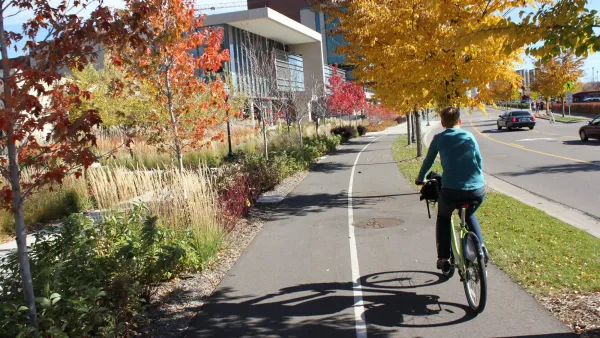Minneapolis and St. Paul are celebrating their newfound local control on matters of traffic safety be reconsidering the speed limits on city-owned streets and roads.

"The compromises forged at the end of last year’s [2019] legislative session included a new law that allows Minnesota cities to set their own speed limits on city streets," according to an article by Bill Lindeke, and St. Paul is one of the cities moving to take advantage of their newfound local control.
"In both Minneapolis and Saint Paul, the next step is one where cities, on their streets anyway, can begin to set their own pace, and use street regulations to accomplish civic goals," explains Lindeke.
The article includes an explanation of the 85th percentile rule, describing the status quo for determining speed limits as perverse.
Especially in cities, the 85th percentile rule can work in perverse ways. At its extremes, the principle rewards drivers who speed by changing the rules. If enough people break the law, the rule simply changes the law to accommodate them. For decades, that’s been how speed limits were set throughout the state.
In St. Paul, according to Lindeke, engineers are considering a new process for thinking about which speed limits are appropriate for which streets in the absence of the 85th percentile's precedent.
As reported from Minneapolis earlier this year, St. Paul is not alone in seeking lower speed limits now that the state has relaxed its powers of preemption.
FULL STORY: St. Paul is rethinking its speed limits

National Parks Layoffs Will Cause Communities to Lose Billions
Thousands of essential park workers were laid off this week, just before the busy spring break season.

Retro-silient?: America’s First “Eco-burb,” The Woodlands Turns 50
A master-planned community north of Houston offers lessons on green infrastructure and resilient design, but falls short of its founder’s lofty affordability and walkability goals.

Delivering for America Plan Will Downgrade Mail Service in at Least 49.5 Percent of Zip Codes
Republican and Democrat lawmakers criticize the plan for its disproportionate negative impact on rural communities.

Test News Post 1
This is a summary

Test News Headline 46
Test for the image on the front page.

Balancing Bombs and Butterflies: How the National Guard Protects a Rare Species
The National Guard at Fort Indiantown Gap uses GIS technology and land management strategies to balance military training with conservation efforts, ensuring the survival of the rare eastern regal fritillary butterfly.
Urban Design for Planners 1: Software Tools
This six-course series explores essential urban design concepts using open source software and equips planners with the tools they need to participate fully in the urban design process.
Planning for Universal Design
Learn the tools for implementing Universal Design in planning regulations.
EMC Planning Group, Inc.
Planetizen
Planetizen
Mpact (formerly Rail~Volution)
Great Falls Development Authority, Inc.
HUDs Office of Policy Development and Research
NYU Wagner Graduate School of Public Service





























